Immediately before “Little Nigger Boy” is “Lee-Hi-Lung-Whan,” describing “a little Chinaman” in offensive and demeaning language. Within the Oz series, as Tuerk also observes, the 1905 Woggle-Bug Book, a rarely reprinted installment, uses elaborate, offensive ethnic caricature for comedy. The narration casually features slurs:
“Oh my prismatic personification of gigantic gorgeousness!—again I have found you!”
“Sure tling,” said the Chink with composure.
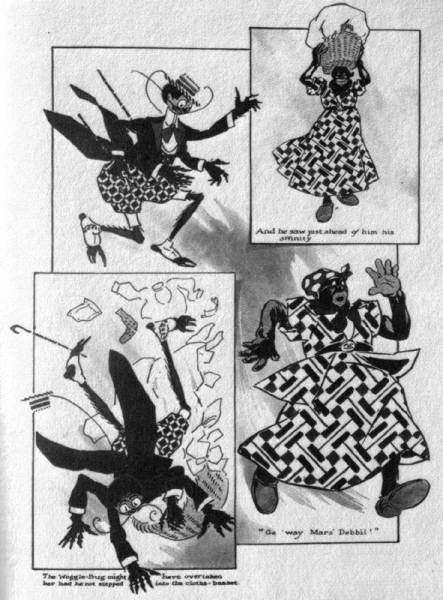
Neill draws the Woggle-Bug with large, circular eyes, large, round lips, and a tuxedo and top hat. Ike Morgan, illustrator of The Woggle-Bug Book, drops the lips in favor of short, kinky hair. Mixed with the character’s physical comedy, the design suggests the blackface minstrelsy popular in the late nineteenth century into the twentieth and, at the time, de rigueur for cartoonists depicting Black people. In this, the Woggle-Bug is not alone in Oz.
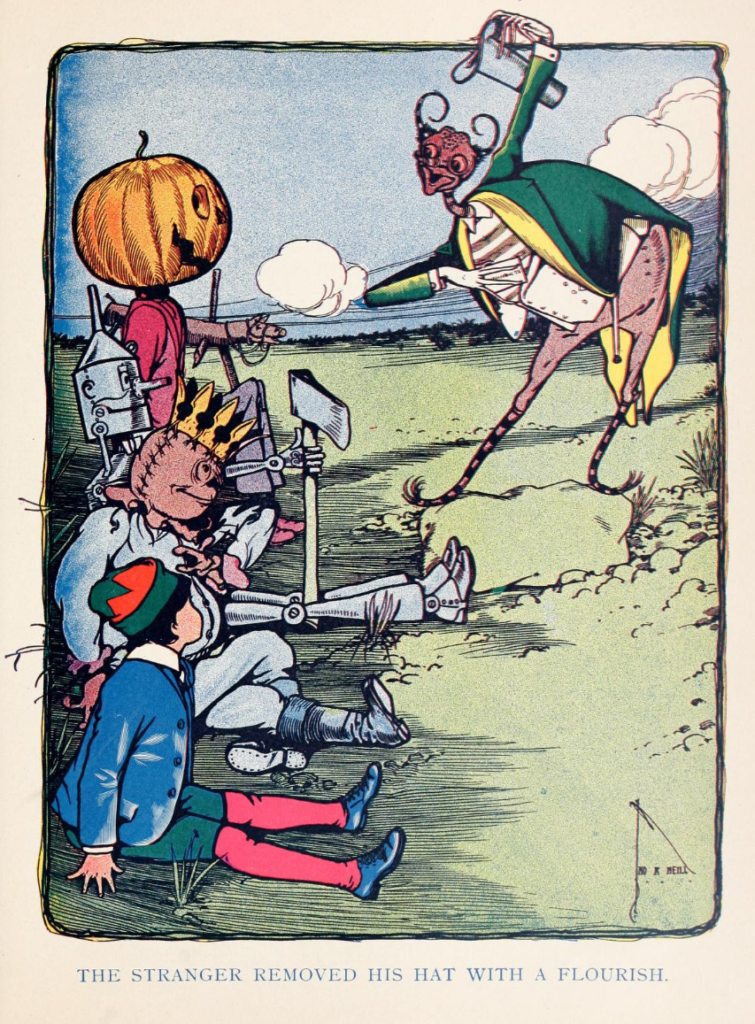
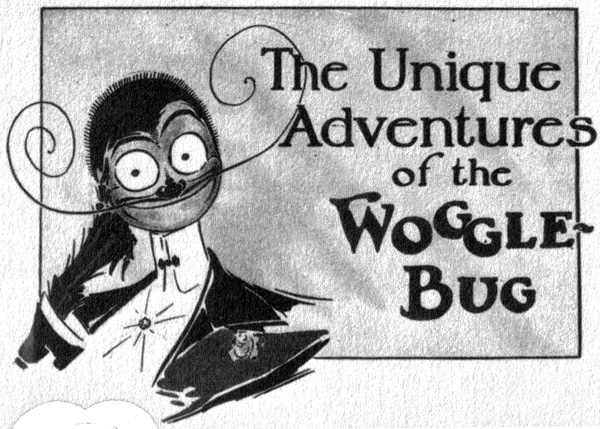
The fourth chapter of Racial Innocence by Robin Bernstein concerns the racial politics of Raggedy Ann but dedicates many pages to consideration of Baum’s influence on Ann’s creator, Johnny Gruelle. Bernstein contends the Scarecrow, a major character throughout the Oz series, “possessed minstrel roots as deep as the Golliwogg’s” (160). (For those not familiar with old-timey racism, the Golliwogg was a popular toy mascot based on blackface minstrel actors whose name alone is now considered a slur.)
Likely more famous than The Wonderful Wizard at the time was the 1902 stage musical adaptation, The Wizard of Oz. Although it vastly diverges from the source text, Baum was involved in its writing, and various details introduced in the play influenced later adaptations and also the novels themselves. As Bernstein points out, Fred A. Stone, who played the Scarecrow, and David Montgomery, who played the Tin Woodman, were longtime blackface comedians and infused their performances of these characters with minstrel show characteristics.
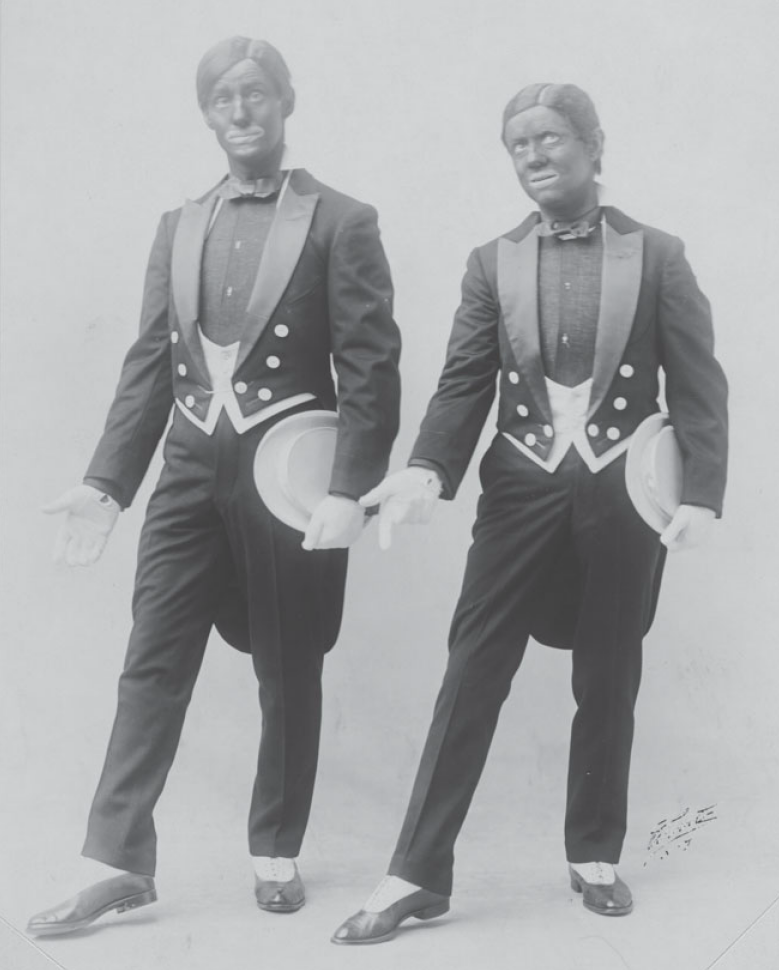
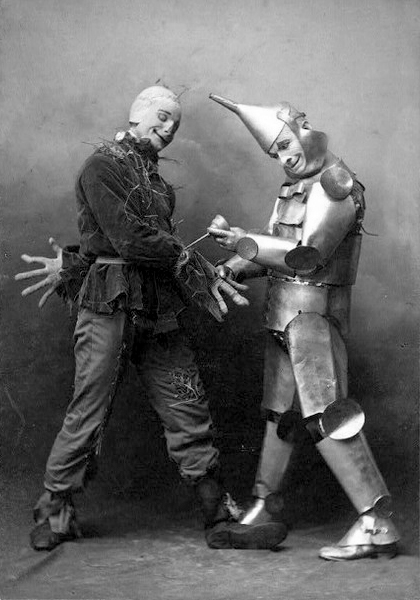
Above, left: Montgomery and Stone in blackface, from Bernstein 162. Above, right: Montgomery and Stone as the Scarecrow and Tin Woodman in 1902.
“Blackface performance did not figure as an underlying presence in the 1902 and 1903 Wizard of Oz extravaganzas. On the contrary, minstrel traditions figured prominently and explicitly” in the inclusion of numerous racist minstrel-style musical numbers (161, italics mine). Bernstein cites some lyrics from “The Witch behind the Moon” as an example. These include the typical slurs and condescending phonetic spelling of AAE: “Up behind de moon dere lives a nigger witch dat prowls around at night, / Comes a’ridin’ down upon a broomstick when de moon don’t shine too bright” (quoted on 163).
Bernstein proceeds to observe, correctly, that Baum continued the Oz series intending The Marvelous Land to serve less as a novel on its own and more as the basis of another musical starring the Woggle-Bug, already a minstrel-like character involved in racist humor. The Marvelous Land is in some ways a sequel to the 1902 musical, incorporating King Pastoria from the latter. Baum dedicated The Marvelous Land to Stone and Montgomery, enshrining blackface actors in the Oz canon, and let their portrayals affect how he wrote his characters, particularly the Scarecrow.
“Thus a blackface star’s performance of the Scarecrow defined the subsequent literary and visual representations of the character, and a minstrel-infused extravaganza fundamentally structured the deepest logics of Oz after 1902” (Bernstein 163). While Bernstein is overstating how fundamental racism is to all of Baum’s Oz, the Scarecrow shifted from the clever one to a victim of comedic violence that loses the emotional urgency and seriousness of his injuries in the first novel, and the post-musical Neill, unlike Denslow, drew him with big, round eyes, a “semicircular smile,” large gloves, and a general floppiness suggestive of blackface minstrel performances.
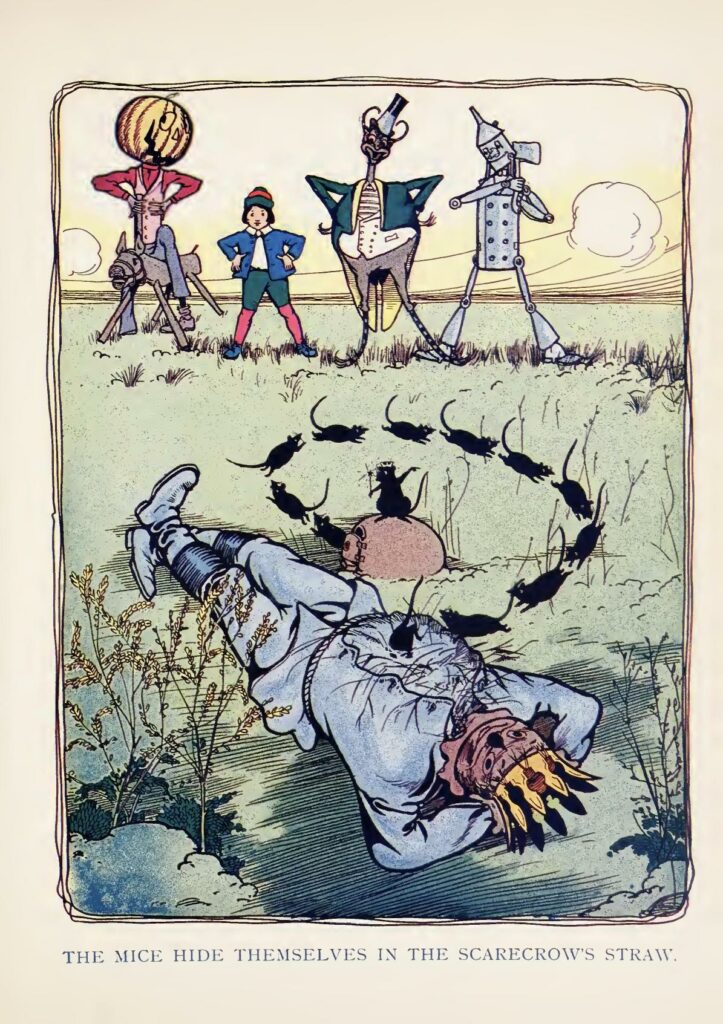
(Incidentally, the transgender transformation of Ozma is less remarkable in the context of Baum’s desire to adapt the novel into a play. It was a gag because, conventional for the time, a girl would have been playing Tip from the beginning. Similarly, there are two armies of women not to make a particular comment about women or feminism but just so that the play could feature a large number of dancing choir girls.)